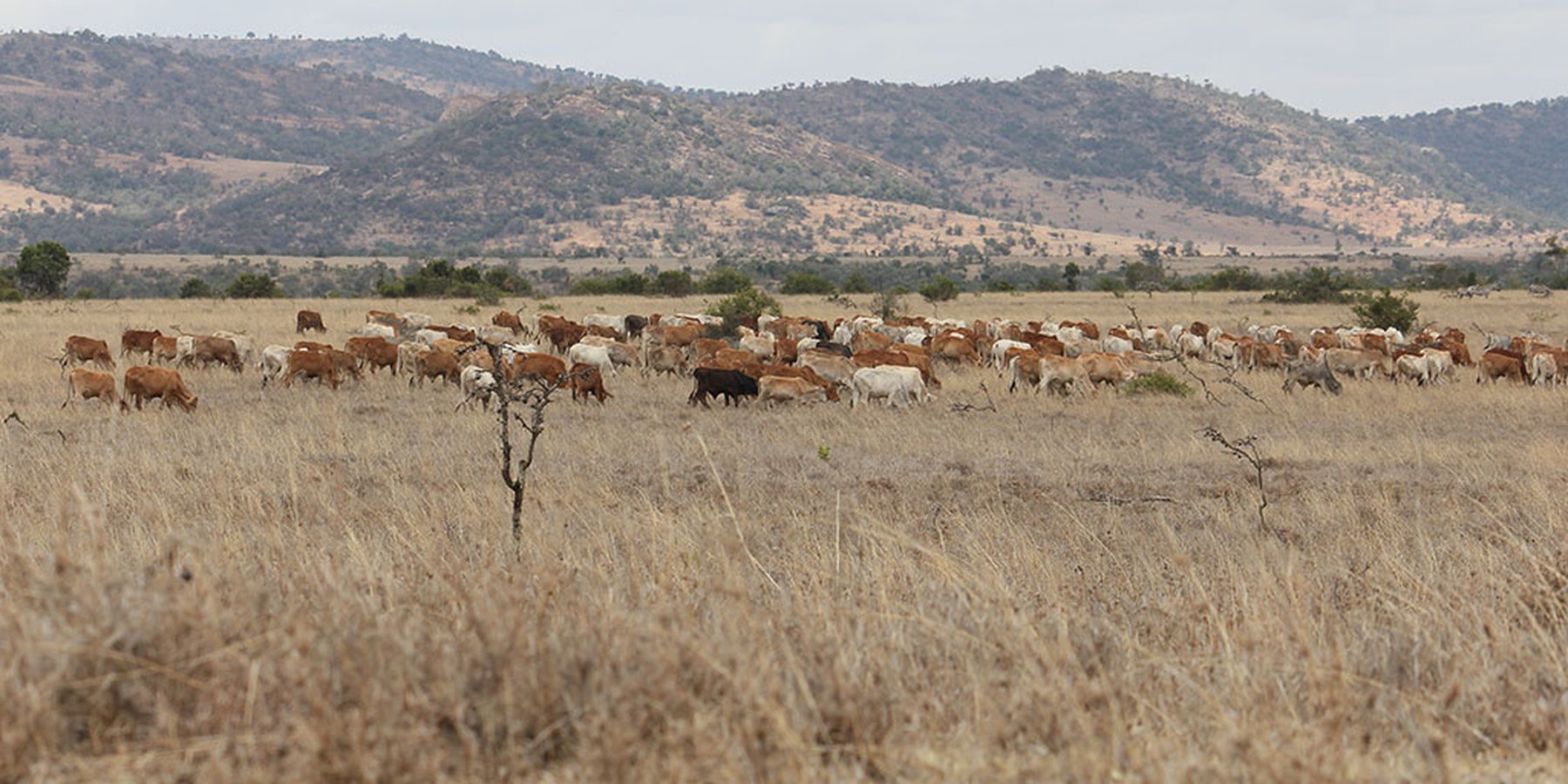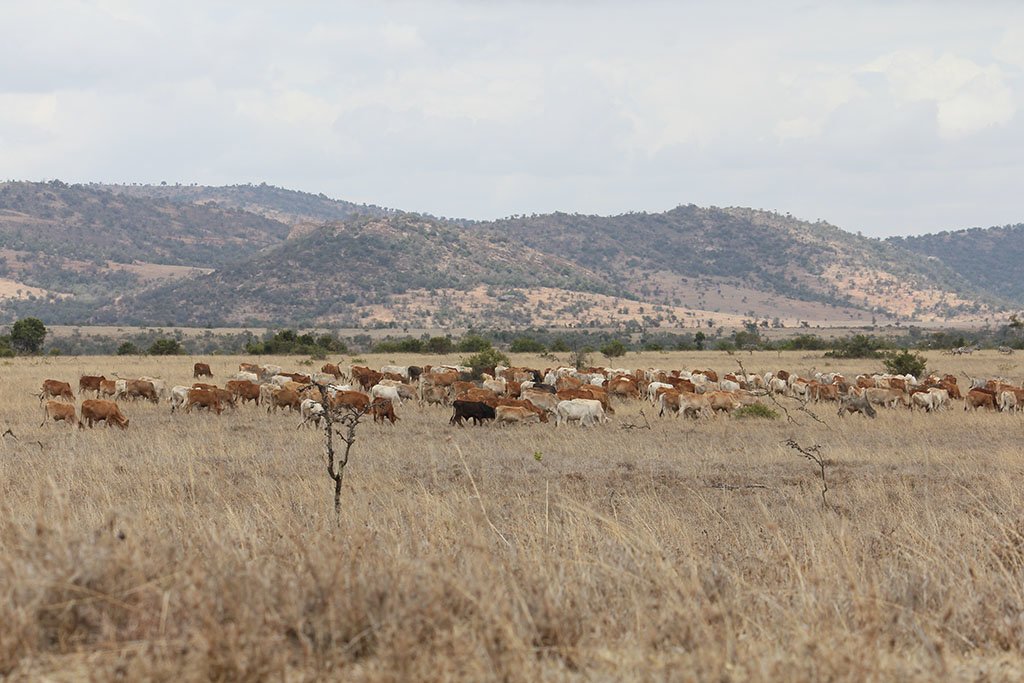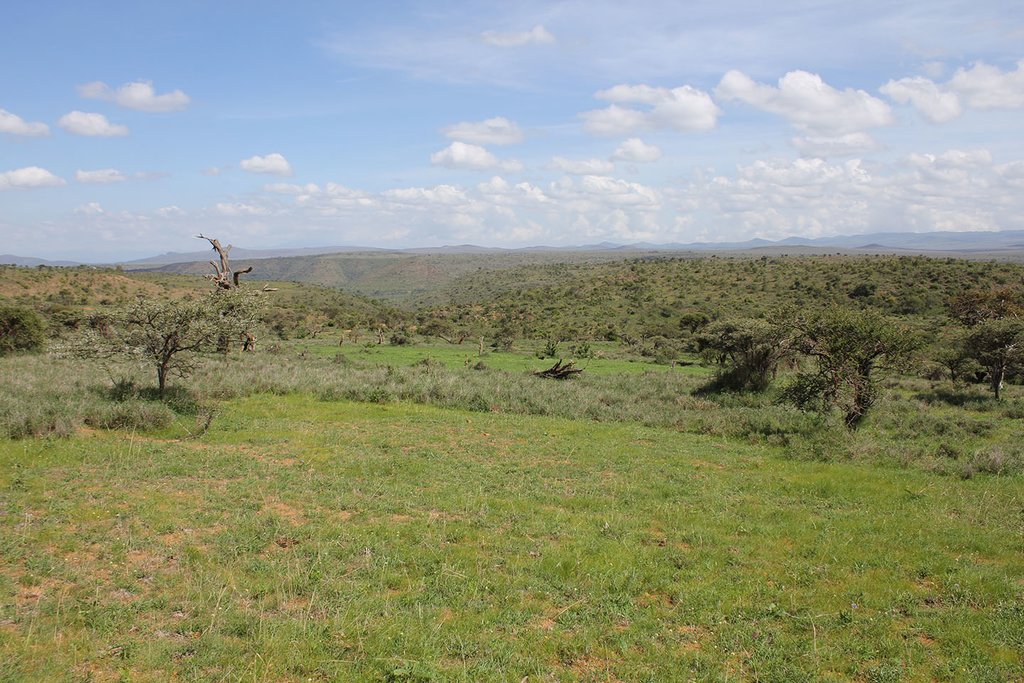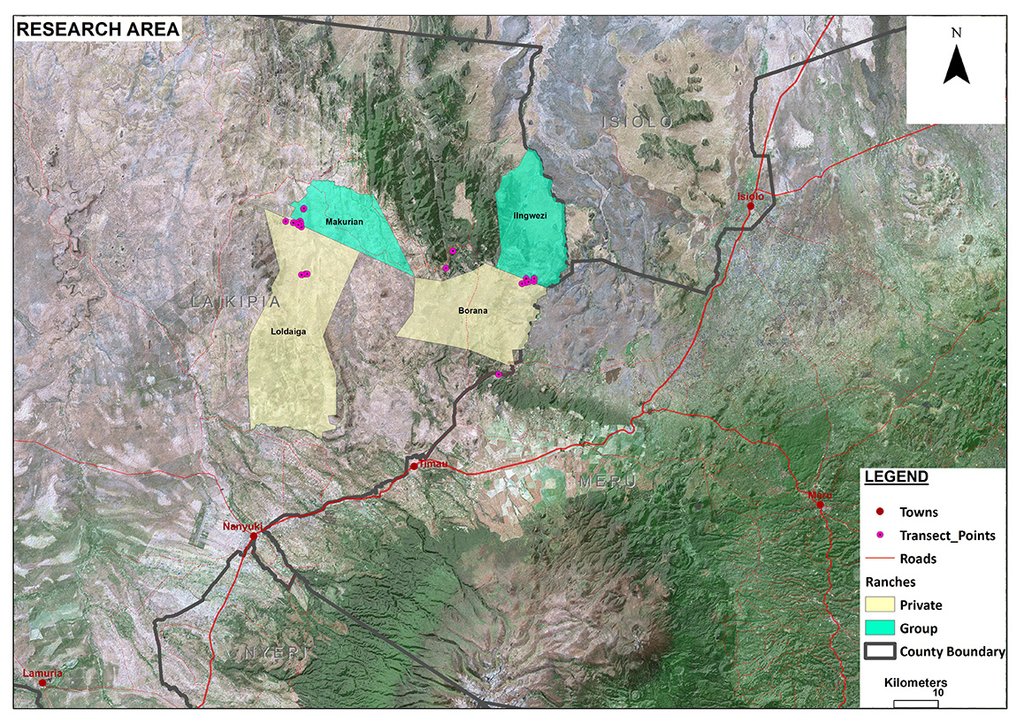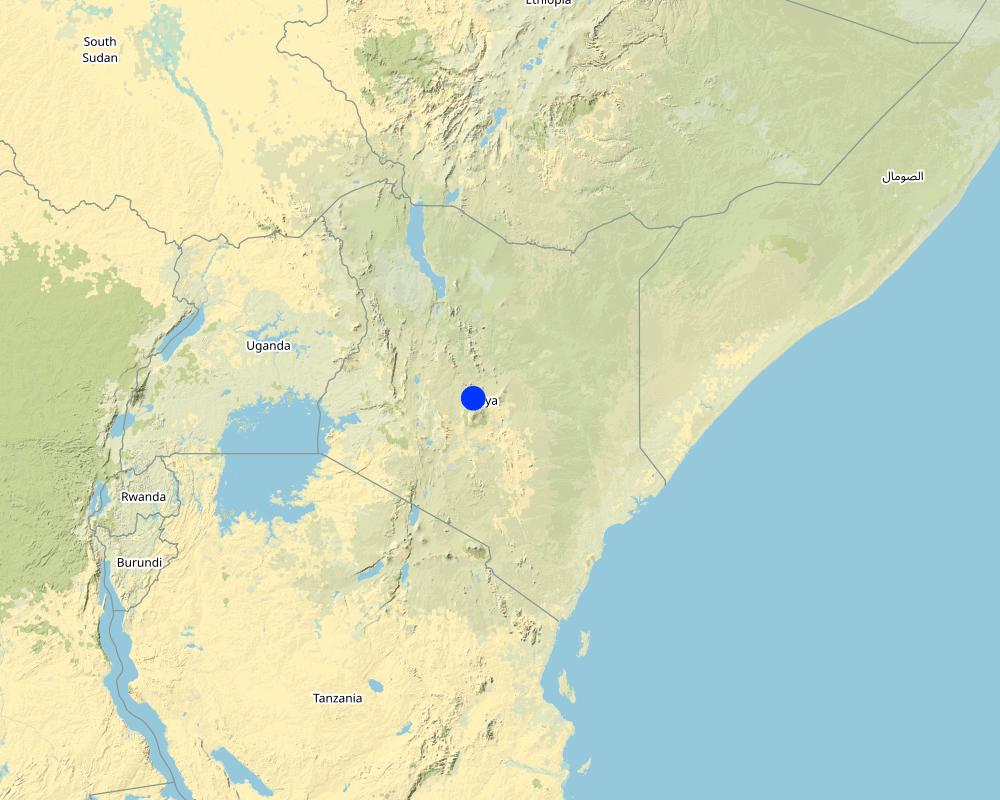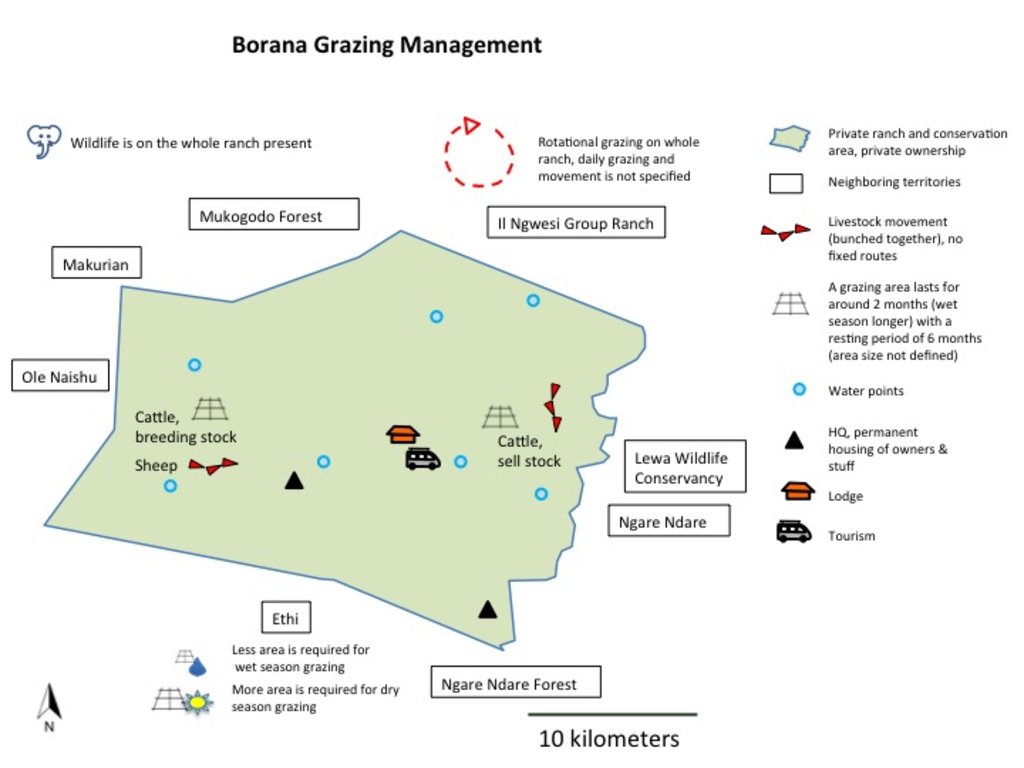Borana Ranch Grazing with Holistic Management Principles [肯尼亚]
- 创建:
- 更新:
- 编制者: Michael Herger
- 编辑者: –
- 审查者: Alexandra Gavilano, Rima Mekdaschi Studer, Hanspeter Liniger, Donia Mühlematter, Joana Eichenberger
technologies_2972 - 肯尼亚
- Borana Ranch Grazing with Holistic Management Principles: Sept. 3, 2018 (inactive)
- Borana Ranch Grazing with Holistic Management Principles: May 6, 2019 (inactive)
- Borana Ranch Grazing with Holistic Management Principles: Nov. 2, 2021 (public)
- Borana Ranch Grazing with Holistic Management Principles: Feb. 22, 2018 (inactive)
- Borana Ranch Grazing with Holistic Management Principles: Feb. 1, 2018 (inactive)
查看章节
全部展开 全部收起1. 一般信息
1.2 参与该技术评估和文件编制的资源人员和机构的联系方式
关键资源人
土地使用者:
Sora Abdi
Borana Ranch ltd. and Borana Conservancy ltd.
肯尼亚
有助于对技术进行记录/评估的项目名称(如相关)
Book project: Guidelines to Rangeland Management in Sub-Saharan Africa (Rangeland Management)1.3 关于使用通过WOCAT记录的数据的条件
编制者和关键资源人员接受有关使用通过WOCAT记录数据的条件。:
是
1.4 所述技术的可持续性声明
这里所描述的技术在土地退化方面是否存在问题,导致无法被认为是一种可持续的土地管理技术?:
否
2. SLM技术的说明
2.1 技术简介
技术定义:
Borana is a private ranch which combines livestock production with conservation and tourism. "Holistic Management" is applied as a principle for livestock on semi-arid lands with limited water resources. Grazing comprises “bunching” and rotational movement of all animals in herds.
2.2 技术的详细说明
说明:
Livestock production on Borana ranch is carried out under extensive grazing for beef, dairy, and sheep production. There is strategic fattening and offtake for sales in harmony with conservation principles. The Borana Conservancy is a non-profit organisation, also belonging to the ranch – on the same land - dedicated to the sustainable conservation of critical habitat and wildlife. Ranching contributes financially to the running of the conservancy.
“Holistic Management” (HM) as described by Allan Savory (1988) and promoted by Laikipia Wildlife Forum in Laikipia, is a method that integrates decision-making, planning, and livestock keeping. On the land, this means bunching of all livestock close together in order to act as a "plough" and break the soil to help incorporate seeds and nutrients. Water also infiltrates better. The aim is to improve plant growth and thus soil. Furthermore, it means moving the animals together from block to block, by planned rotational grazing with resting periods. HM aims at managing high numbers of livestock and simultaneously restoring degraded land. However, Holistic Management principles remain controversial.
Livestock herders employed by Borana move different herds of animals rotationally from one grazing area to the next. A defined grazing area lasts for around two months, with a resting period of six months. However, the grazing area and period vary a lot depending on rainfall. During the wet season, livestock usually spend more than two months within the same block. Cattle herds are split depending on their function as offtake for sales, or as breeding stock. The selling stock is located on the eastern side of Borana (currently 600 Head of cattle), while the breeding stock is on the western side (currently 1,800 Head of cattle). Sheep are grazed on the western side too (currently 1,200 Head of cattle).
A calf stays with its mother until it is about six months old. Then a few males are selected as bulls, and all others castrated. At the same time females are selected for breeding to rebuild stock. Only one bull was purchased from outside, in 2013 which was a rare exception.
Livestock are sold to butchers in local centres (e.g. Nanyuki, about 50 km distance), in the capital Nairobi (about 300 km away), and to the son of the owner, who runs a business nearby. Usually, only old and disabled cows are selected for selling.
Borana helps neighbouring group ranches with improved genetics - and access to their land for fattening purpose. It also acts as a grass bank during droughts. According to Borana management, boundaries between Borana and community ranches, which once clearly defined the difference between managed and over-grazed lands, are becoming less clear.
Typical of private ranches in Laikipia, Borana supports some of the highest densities of wildlife in Kenya. The wild herbivore biomass density on private ranches is estimated by Georgiadis (2007) at 14 ha /TLU.
2.3 技术照片
2.5 已应用该技术的、本评估所涵盖的国家/地区/地点
国家:
肯尼亚
区域/州/省:
Laikipia
有关地点的进一步说明:
Mukogodo District
具体说明该技术的分布:
- 均匀地分布在一个区域
如果不知道精确的区域,请注明大致覆盖的区域:
- 100-1,000 平方千米
Map
×2.6 实施日期
注明实施年份:
2008
2.7 技术介绍
详细说明该技术是如何引入的:
- 通过项目/外部干预
注释(项目类型等):
Holistic Management approach by Allan Savory.
In Laikipia, it was introduced by Richard Hartfield, Laikipia Wildlife Forum and funded by Laikipia Wildlife Forum (LWF), Lewa Conservancy and Northern Rangeland Trust (NRT). Borana beared costs themselves.
3. SLM技术的分类
3.1 该技术的主要目的
- 改良生产
- 减少、预防、恢复土地退化
- 保护生态系统
- 保持/提高生物多样性
3.2 应用该技术的当前土地利用类型

牧场
粗放式放牧:
- 经营牧场
动物类型:
- 牛 - 奶制品
- 牛 - 非奶牛牛肉
- 家禽
- 绵羊
- 生猪
产品和服务:
- 肉类
- 奶类
品种:
绵羊
计数:
1000

定居点、基础设施
- 定居点、建筑物
注释:
Lodge for Tourism.
Headquarter.
注释:
Main animal species and products: Livestock: Cattle, sheep, chicken, pigs. Milk, beef and sheep production (a few chicken and pigs). Some organic farming (herbs, vegetables). Local (30%), national and partly international distribution (both 70%). Livestock: 1,780 TLU; Stocking rate: 7.3 ha/TLU Pressure on land including wildlife: 4.8 ha/TLU Livestock numbers: 2,400 cattle, 1,000 sheep Sales: Cattle 10% sales, Sheep 25%. Assisting community grazing: 500-1,000 Head of cattle during droughts until it rains. Wildlife: giraffe, antelope/gazelle (e.g. gerenuk, eland, waterbuck, impala, Thomson's gazelle), baboon, zebra, dikdik, hare, rhino, elephant, predators and others. There is more wildlife than on group ranches.
Number of growing seasons per year: 2
Short rains in November and December. Long rains in April and May. Rains from (October) November to December are usually better in this area. Rainfalls with strong local variations and changing regimes.
Livestock density: Livestock: 1780 TLU; Stocking rate: 7.3 ha/TLU livestock but overall pressure on land including wildlife: 4.8 ha/TLU
3.4 供水
该技术所应用土地的供水:
- 雨养
3.5 该技术所属的SLM组
- 畜牧业和牧场管理
- 改良的地面/植被覆盖
3.6 包含该技术的可持续土地管理措施

管理措施
- M2:改变管理/强度级别
- M4:活动时间安排的重大变化
3.7 该技术强调的主要土地退化类型

土壤水蚀
- Wt:表土流失/地表侵蚀
- Wg:冲沟侵蚀/沟蚀

土壤风蚀
- Et:表土流失

物理性土壤退化
- Pc:压实
- Pk:熟化和结壳
- Pi:覆土

生物性退化
- Bc:植被覆盖的减少
- Bh:栖息地丧失
- Bq:数量/生物量减少
- Bs:质量和物种组成/多样性的下降
- Bl:土壤寿命损失
注释:
Across the grasslands and rangelands, an increase in bare land and bush has been a clear trend all over Laikipia for many years, both on community-owned lands and private ranches. Major identified ecological problems (partly) caused by livestock production are: bare ground, low contents of soil organic carbon and plant-available nutrients, soil erosion (sealing, crusting, rills and gullies, water flow patterns, sheet erosion, pedestals), poor soil properties, undesirable species, and (increasing) woody and invasive species. The technology aims at improving vegetation cover of the land and thereby reducing further degradation and restoring degraded land. Borana is clearly not as much affected by the degradation of the land (compare Herger 2018), however, they use and support ranching with Holistic Management as a tool to enhance the quality of the grazing and prevent degradation. According to Borana management, cattle grazing reduces the moribund grass biomass, promotes seed dispersal, increases the nutritional value of the grass, and decreases the risk of bush fires. Even more crucial: The introduction of planned grazing (as Holistic Management) to Group Ranches in the area prevents conflicts (e.g. invading of private ranches), livestock diseases and deaths.
3.8 防止、减少或恢复土地退化
具体数量名该技术与土地退化有关的目标:
- 防止土地退化
- 减少土地退化
4. 技术规范、实施活动、投入和成本
4.1 该技术的技术图纸
4.2 有关投入和成本计算的一般信息
具体说明成本和投入是如何计算的:
- 每个技术单元
指定单位:
Only livestock production related; for the whole farm: Herders, animals treatment
具体说明成本计算所用货币:
- 美元
注明雇用劳工的每日平均工资成本:
4
4.3 技术建立活动
| 活动 | 时间(季度) | |
|---|---|---|
| 1. | Training of employees | |
| 2. | Grazing planning |
4.4 技术建立所需要的费用和投入
注释:
No figures on this, costs for implementation are estimated low, because ranching with the former grazing system was not that different before.
4.5 维护/经常性活动
| 活动 | 时间/频率 | |
|---|---|---|
| 1. | Herders, supervisors, watchmen etc | |
| 2. | Animal treatments (vaccination, spraying, injections) |
4.6 维护/经常性活动所需要的费用和投入(每年)
| 对投入进行具体说明 | 单位 | 数量 | 单位成本 | 每项投入的总成本 | 土地使用者承担的成本% | |
|---|---|---|---|---|---|---|
| 劳动力 | Herders/employees | Person*days | 16200.0 | 4.0 | 64800.0 | 100.0 |
| 劳动力 | Insurance | Unknown quantity | 1.0 | 3900.0 | 3900.0 | |
| 设备 | Vehicle | Unknown quantity | 1.0 | 3700.0 | 3700.0 | |
| 其它 | Animals treatments | Per TLU | 1780.0 | 11.0 | 19580.0 | |
| 技术维护所需总成本 | 91980.0 | |||||
| 技术维护总成本,美元 | 91980.0 | |||||
4.7 影响成本的最重要因素
描述影响成本的最决定性因素:
Labor
5. 自然和人文环境
5.1 气候
年降雨量
- < 250毫米
- 251-500毫米
- 501-750毫米
- 751-1,000毫米
- 1,001-1,500毫米
- 1,501-2,000毫米
- 2,001-3,000毫米
- 3,001-4,000毫米
- > 4,000毫米
指定年平均降雨量(若已知),单位为mm:
497.00
有关降雨的规范/注释:
Rainfall gauge Borana HQ average from 2013-2016. Strong local (and temporal) variation, changing rainfall regimes.
注明所考虑的参考气象站名称:
Rainfall gauge Borana HQ
农业气候带
- 半干旱
5.2 地形
平均坡度:
- 水平(0-2%)
- 缓降(3-5%)
- 平缓(6-10%)
- 滚坡(11-15%)
- 崎岖(16-30%)
- 陡峭(31-60%)
- 非常陡峭(>60%)
地形:
- 高原/平原
- 山脊
- 山坡
- 山地斜坡
- 麓坡
- 谷底
垂直分布带:
- 0-100 m a.s.l.
- 101-500 m a.s.l.
- 501-1,000 m a.s.l.
- 1,001-1,500 m a.s.l.
- 1,501-2,000 m a.s.l.
- 2,001-2,500 m a.s.l.
- 2,501-3,000 m a.s.l.
- 3,001-4,000 m a.s.l.
- > 4,000 m a.s.l.
说明该技术是否专门应用于:
- 不相关
5.3 土壤
平均土层深度:
- 非常浅(0-20厘米)
- 浅(21-50厘米)
- 中等深度(51-80厘米)
- 深(81-120厘米)
- 非常深(> 120厘米)
土壤质地(表土):
- 粗粒/轻(砂质)
- 中粒(壤土、粉土)
土壤质地(地表以下> 20厘米):
- 粗粒/轻(砂质)
- 中粒(壤土、粉土)
表土有机质:
- 中(1-3%)
如有可能,附上完整的土壤描述或具体说明可用的信息,例如土壤类型、土壤酸碱度、阳离子交换能力、氮、盐度等。:
Red and brown sandy soils. Black cotton soil. Luvisol, Regosol, Vertisol
SOC 2 %
pH: 6.4
Clay: 8%
Silt: 53%
Sand: 39%
Further data on rangeland health compare Herger (2018)
5.4 水资源可用性和质量
地下水位表:
> 50米
地表水的可用性:
中等
水质(未处理):
不良饮用水(需要处理)
水的盐度有问题吗?:
否
该区域正在发生洪水吗?:
否
关于水质和水量的注释和进一步规范:
Waterpoints provided by waterpipes (sometimes destroyed by elephants)
5.5 生物多样性
物种多样性:
- 高
栖息地多样性:
- 高
关于生物多样性的注释和进一步规范:
Grassed acacia bushland. Little bare ground. Dominant grasses: Eragrostis species, Cynadon species, Hyparrhenia species, Kelenger species. Dominant shrubs: Grewia tembensis, Hibiscus aponeurus, Rhus natalensis, Scutia myrtina. Dominant trees: Acacia tortilis, Acacia mellifera, Euclea divinorum, Boscia angustifolia. Detailed list of all species (also wildlife) available (Herger 2018)
5.6 应用该技术的土地使用者的特征
定栖或游牧:
- 定栖的
生产系统的市场定位:
- 商业/市场
非农收入:
- 收入的10-50%
相对财富水平:
- 非常丰富
个人或集体:
- 个人/家庭
机械化水平:
- 手工作业
性别:
- 女人
- 男人
土地使用者的年龄:
- 中年人
5.7 应用该技术的土地使用者使用的平均土地面积
- < 0.5 公顷
- 0.5-1 公顷
- 1-2 公顷
- 2-5公顷
- 5-15公顷
- 15-50公顷
- 50-100公顷
- 100-500公顷
- 500-1,000公顷
- 1,000-10,000公顷
- > 10,000公顷
这被认为是小规模、中规模还是大规模的(参照当地实际情况)?:
- 大规模的
5.8 土地所有权、土地使用权和水使用权
土地所有权:
- 个人,有命名
土地使用权:
- 个人
用水权:
- 个人
注释:
Masai in the area have claimed that land leases of white settlers have expired and the land belongs to them. Government states the land belongs to the private ranchers, but the future development is unknown. There have already been conflicts and are likely to happen again. On the other hand, cooperation with group ranches has increased.
5.9 进入服务和基础设施的通道
健康:
- 贫瘠
- 适度的
- 好
教育:
- 贫瘠
- 适度的
- 好
技术援助:
- 贫瘠
- 适度的
- 好
就业(例如非农):
- 贫瘠
- 适度的
- 好
市场:
- 贫瘠
- 适度的
- 好
能源:
- 贫瘠
- 适度的
- 好
道路和交通:
- 贫瘠
- 适度的
- 好
饮用水和卫生设施:
- 贫瘠
- 适度的
- 好
金融服务:
- 贫瘠
- 适度的
- 好
6. 影响和结论性说明
6.1 该技术的现场影响
社会经济效应
生产
饲料生产
注释/具体说明:
Quality of pasture
畜牧生产
注释/具体说明:
Better quality of animals
土地管理
水资源可用性和质量
家畜用水的可用性
家畜用水的质量
收入和成本
工作量
社会文化影响
土地使用权/用水权
注释/具体说明:
Cooperation with Group Ranches
SLM/土地退化知识
冲突缓解
注释/具体说明:
Good: Cooperation with Group Ranches. But still danger of invaders. Good pasture attracts herders in distress (e.g. pastoralists from further north)
生态影响
水循环/径流
水量
水质
地表径流
蒸发
土壤
土壤水分
土壤覆盖层
土壤流失
土壤有机物/地下C
生物多样性:植被、动物
植被覆盖
生物量/地上C
植物多样性
动物多样性
栖息地多样性
减少气候和灾害风险
干旱影响
6.4 成本效益分析
技术收益与技术建立成本相比如何(从土地使用者的角度看)?
短期回报:
中性/平衡
长期回报:
积极
技术收益与技术维护成本/经常性成本相比如何(从土地使用者的角度看)?
短期回报:
积极
长期回报:
积极
6.5 技术采用
- 11-50%
在所有采用这项技术的人当中,有多少人是自发的,即未获得任何物质奖励/付款?:
- 11-50%
6.6 适应
最近是否对该技术进行了修改以适应不断变化的条件?:
否
6.7 该技术的优点/长处/机会
| 土地使用者眼中的长处/优势/机会 |
|---|
| Method leaves grass time to grow/rest |
| One can manage resources properly (water and pasture) |
| To keep all animals in one place makes vaccinations /disease prevention easier |
| “Ploughing effect” by the concentrated / bunched animals in one herd (new grass stimulated) |
| Tick population kept under control |
| In general for the whole area if many Group Ranches implement Holistic Management: More secure financial future and less stress during times of drought for pastoralists’ livestock. For Borana, this means less pressure from surrounding pastoralists when pasture is scarce. |
| Enhance the quality of grazing. Cattle grazing reduces the moribund grass biomass, promotes seed dispersal, increases the nutritional value of the grass and decreases the risk of bush fires. |
| 编制者或其他关键资源人员认为的长处/优势/机会 |
|---|
| The listed advantages from Abdi Sora, land user, are for the most part shared by the compiler's view. Regarding Holistic Management (HM) principles and land recovery there remain some uncertainties. On the one hand it is generally questionable to state as in HM that: “the more animals the better” (as long as they are managed properly they can even recover degraded land), but this seems dangerous in areas with such high livestock numbers and cultural value of livestock keeping - without scientific proof of the principles in similar ecological conditions. Since Borana has relatively low stocking rates and good management the rangeland is in good condition anyway. The effects of Holistic Management principles on their own are difficult to estimate. |
6.8 技术的弱点/缺点/风险及其克服方法
| 土地使用者认为的弱点/缺点/风险 | 如何克服它们? |
|---|---|
| More work (a lot of supervision, monitoring etc) | |
| More costs (a lot of supervision, monitoring etc) | |
| Danger of disease outbreak in a big herd |
7. 参考和链接
7.1 信息的方法/来源
- 实地考察、实地调查
4 field visits with included "rangeland health assessment" in different parts of Borana (mainly next to gate to Il Ngwesi) where I could see the condition of the land as well as several other visits of the area.
- 与土地使用者的访谈
Several meetings with the general manager and a short meeting with the owner of the ranch.
- 与SLM专业人员/专家的访谈
Truman Young
Dan Rubenstein
Dino Martins
John Letai
Samali Letai
Peter Hetz
Dominic Maringa
Joseph Putunoi
Patrick Ekodere
- 根据报告和其他现有文档进行编译
Scientific papers, LWF reports etc.
(现场)数据是什么时候汇编的?:
22/01/2017
7.2 参考可用出版物
标题、作者、年份、ISBN:
Georgiadis, N.J., Olivero, I.N., Romanach, S.S. (2007). Savanna herbivore dynamics in a livestock-dominated landscape: I. Dependence on land use, rainfall, density, and time. Biology Conservation 137(3): 461-472.
可以从哪里获得?成本如何?
Online
标题、作者、年份、ISBN:
Herger, M.B. (2018). Environmental Impacts of Red Meat Production. MSc Thesis. University of Bern.
可以从哪里获得?成本如何?
University of Bern
标题、作者、年份、ISBN:
Savory, A (1988). Holistic Resource Management. Gilmour Publishing, Harare, Zimbabwe
可以从哪里获得?成本如何?
Online
标题、作者、年份、ISBN:
•Carter, J., Jones, A., O’Brien, M., Ratner, J., Wuerthner, G. (2014). Holistic Management: Misinformation on the Science of Grazed Ecosystems.
可以从哪里获得?成本如何?
International Journal of Biodiversity.
标题、作者、年份、ISBN:
•Briske, D.D., Ash, A.J., Derner, J.D., Huntsinger, L. (2014). Commentary: A critical assessment of the policy endorsement for holistic management. Agricultural Systems 125:50-53.
链接和模块
全部展开 全部收起链接
无链接
模块
无模块


